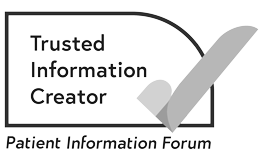Cancer drug treatments for lymphoma
What are cancer drug treatments?
Cancer drug treatments are a combination of cancer drugs used to treat lymphoma. Your doctor or nurse might use this term, or the names of the drugs you are given to describe your treatment. They might also use some of the following terms:
-
Chemotherapy drugs
Chemotherapy drugs are anti-cancer (cytotoxic) drugs that destroy lymphoma cells. Cytotoxic means the drugs are toxic to cells.
-
SteroidsSteroids are drugs given with chemotherapy to help treat lymphoma. They may also help you feel better during treatment.
-
Targeted therapy drugs
Targeted therapy drugs target something in or around the lymphoma cell that is helping it grow and survive.
-
Immunotherapy drugs
Immunotherapy drugs use the body’s immune system to find and attack lymphoma cells.
-
Chemoimmunotherapy
Chemoimmunotherapy means a combination of chemotherapy drugs and targeted or immunotherapy drugs. Having different types of drugs together means lymphoma cells are attacked in several different ways and can make treatment more effective.
-
Monoclonal antibody
A monoclonal antibody is a type of targeted and immunotherapy drug. It is made of a protein that can recognise and target a specific cell in the body. For example, a monoclonal antibody might target and lock on to a protein found on lymphoma cells so that the cell cannot survive.
-
Bi-specific antibody
Monoclonal antibodies that can recognise 2 different targets are called bi-specific antibodies.
-
Antibody-drug conjugate
A monoclonal antibody that is attached to a chemotherapy drug. The monoclonal antibody allows the chemotherapy to be delivered directly to lymphoma cells.
Your cancer doctor or specialist nurse will talk to you about your treatment. They will answer any questions you may have. They will explain:
- which drugs you will have
- how long your treatment will last.
Some people have a higher risk of more serious side effects with some combination drug treatments. Depending on your general health and age, your doctor may suggest combinations that have fewer side effects.
Having cancer drug treatment for lymphoma
Most people have treatment as an outpatient. You usually have a course of treatment over a few days. But sometimes you have it all in 1 day.
Your doctor, nurse or pharmacist will discuss your treatment plan with you. They will give you information about the possible side effects of all the drugs you will have. It is important to follow their advice. Always tell them if you have side effects or if they get worse.
Treatment is usually given into a vein (intravenously). This goes directly into the blood and are carried to all areas of the body. We have more information about how cancer drug treatments are given.
After your first treatment, you have a break of a few weeks without treatment. The break allows your body to recover from any side effects before you start the next cycle.
Treatment and the rest period make up a cycle of your treatment.
Your whole course of treatment may last several months. During this time, you have regular check-ups at the hospital. You usually have a scan before starting treatment and then again at the end. You may also have a scan part way through your course of treatment. These scans show your doctors if the treatment has shrunk the lymphoma.
Your line or port
You may have treatment through a short, thin tube called a cannula. This goes into a vein in your arm or the back of your hand. It is removed after treatment before you go home.
A central line, PICC or port is a tube that can be left in until your whole course of treatment is over. This means you will not need a cannula or needles put into the arm every time you have treatment. Your doctor or nurse can take blood tests from your line or port. You can have antibiotics, fluids and blood transfusions through it too.
When your course of treatment is over, the line or port will be taken out. A doctor or nurse will do this for you, usually in the outpatient department.
Contraception
Your cancer team will advise you not to get pregnant or make someone pregnant while having cancer drug treatments and for some time afterwards. The drugs may harm a developing baby. It is important to use contraception to prevent pregnancy. Follow their advice about:
- what types of contraception to use
- how long after treatment you should continue to use contraception.
Related pages
Hodgkin lymphoma cancer drugs
Different cancer drugs are used depending on the type of Hodgkin lymphoma.
Classical HL
Chemotherapy and steroids are usually the first treatment for classical HL. The most common treatments include the following drug combinations:
You may be offered 1 of the following drugs as part of your treatment if lymphoma has not responded to chemotherapy or has come back:
- brentuximab vedotin (Adcetris®) – brentuximab is a monoclonal antibody.
- nivolumab (Opdivo®) or pembrolizumab (Keytruda®) – these are checkpoint inhibitor drugs.
Nodular lymphocyte-predominant Hodgkin lymphoma (NLPHL)
You usually have a combination of a targeted therapy drug called rituximab with chemotherapy and a steroid called prednisone.
If you are unable to have chemotherapy, you may have rituximab on its own.
Combination treatments used for NLPHL include the following.
- R-CVP
- R-CVinbP – this is the same as R-CVP but the drug vincristine is replaced with another chemotherapy drug, vinblastine.
- R-CHOP
- R-ABVD - a combination of rituximab and ABVD.
Related pages
Non-Hodgkin lymphoma cancer drugs
There are many combinations of drugs used to treat non-Hodgkin lymphoma. For example:
- Pola-R-CHP
- O-CVP – a combination of obinutuzumab (Gazyvaro®) and CVP.
The treatment you have will depend on the stage and type of non-Hodgkin lymphoma you have.
Most combination treatments include a targeted therapy drug, chemotherapy and steroid. But you might have a targeted therapy drug by itself in some situations, such as:
- after other treatments to keep the lymphoma in remission for as long as possible – this is called maintenance treatment
- if other treatments have not been effective.
We have more information about different types of non-Hodgkin lymphoma. This includes information about cancer drug treatments used to treat each type.
Chemotherapy into the spinal fluid (intrathecal chemotherapy)
With some types of NHL, there is a higher risk of lymphoma cells spreading to the brain. This can happen with some types of high grade NHL or when lymphoma is in certain areas of the body.
You may have a type of chemotherapy to treat or prevent lymphoma in the brain. This is called intrathecal chemotherapy. A doctor puts a small amount of liquid chemotherapy into the spinal fluid. This is done in a similar way to a lumbar puncture.
You usually have intrathecal chemotherapy as an outpatient. The chemotherapy drug most commonly used is methotrexate.
Another way to treat or prevent lymphoma in the brain is to give high doses of methotrexate into a vein. In this situation, you may not need intrathecal chemotherapy.
Cancer drug side effects
Different cancer drugs can cause different side effects. Your cancer team will give you information about possible side effects before you start treatment. You may get some of the side effects they mention, but you are unlikely to get all of them.
It is important to tell your cancer team if you have any side effects while you are having treatment. They will give you 24-hour contact numbers for the hospital. If you feel unwell or need advice, you can call at any time of the day or night. Save these numbers in your phone or keep them somewhere safe.
Your cancer team may adjust your treatment to control side effects or to help to prevent more serious problems.
If you need information about a specific drug or combination, you can check our cancer treatments and drugs A to Z. We have detailed information about many types of cancer drugs and their possible side effects. Lymphoma Action also has information about chemotherapy and chemoimmunotherapy treatments used to treat lymphoma.
You can also talk to your cancer team if you want more detailed information about a treatment. Or visit the electronic medicines compendium (emc) website, which has patient information leaflets (PILs) for individual drugs.
About our information
This information has been written, revised and edited by Macmillan Cancer Support’s Cancer Information Development team. It has been reviewed by expert medical and health professionals and people living with cancer.
-
References
Below is a sample of the sources used in our lymphoma information. If you would like more information about the sources we use, please contact us at informationproductionteam@macmillan.org.uk
Follows GA, Barrington SF, et al. Guideline for the first-line management of Classical Hodgkin Lymphoma — A British Society for Haematology guideline. Br J Haematol, 2022; 197, 558– 572. [accessed April 2024].
Fox CP, Chaganti S, McIlroy G, et al. The management of newly diagnosed large B-cell lymphoma: A British Society for Haematology Guideline. Br J Haematol. 2024; 204(4):1178–92. [accessed April 2024].
McKay P, Fielding P, et al. Guidelines for the investigation and management of nodular lymphocyte predominant Hodgkin lymphoma. Br J Haematol, 2015; 172, 32-43. [accessed April 2024].
McNamara C, Montoto S, et al. The investigation and management of follicular lymphoma. Br J Haematol, 2020; 191, 363-381. [accessed April 2024].
National Institute for Health and Care Excellence. Non-Hodgkin’s lymphoma: diagnosis and management. NICE guideline [NG52]. Published: 20 July 2016. Last update Oct 2021. [accessed April 2024].
Date reviewed

Our cancer information meets the PIF TICK quality mark.
This means it is easy to use, up-to-date and based on the latest evidence. Learn more about how we produce our information.
The language we use
We want everyone affected by cancer to feel our information is written for them.
We want our information to be as clear as possible. To do this, we try to:
- use plain English
- explain medical words
- use short sentences
- use illustrations to explain text
- structure the information clearly
- make sure important points are clear.
We use gender-inclusive language and talk to our readers as ‘you’ so that everyone feels included. Where clinically necessary we use the terms ‘men’ and ‘women’ or ‘male’ and ‘female’. For example, we do so when talking about parts of the body or mentioning statistics or research about who is affected.
You can read more about how we produce our information here.





